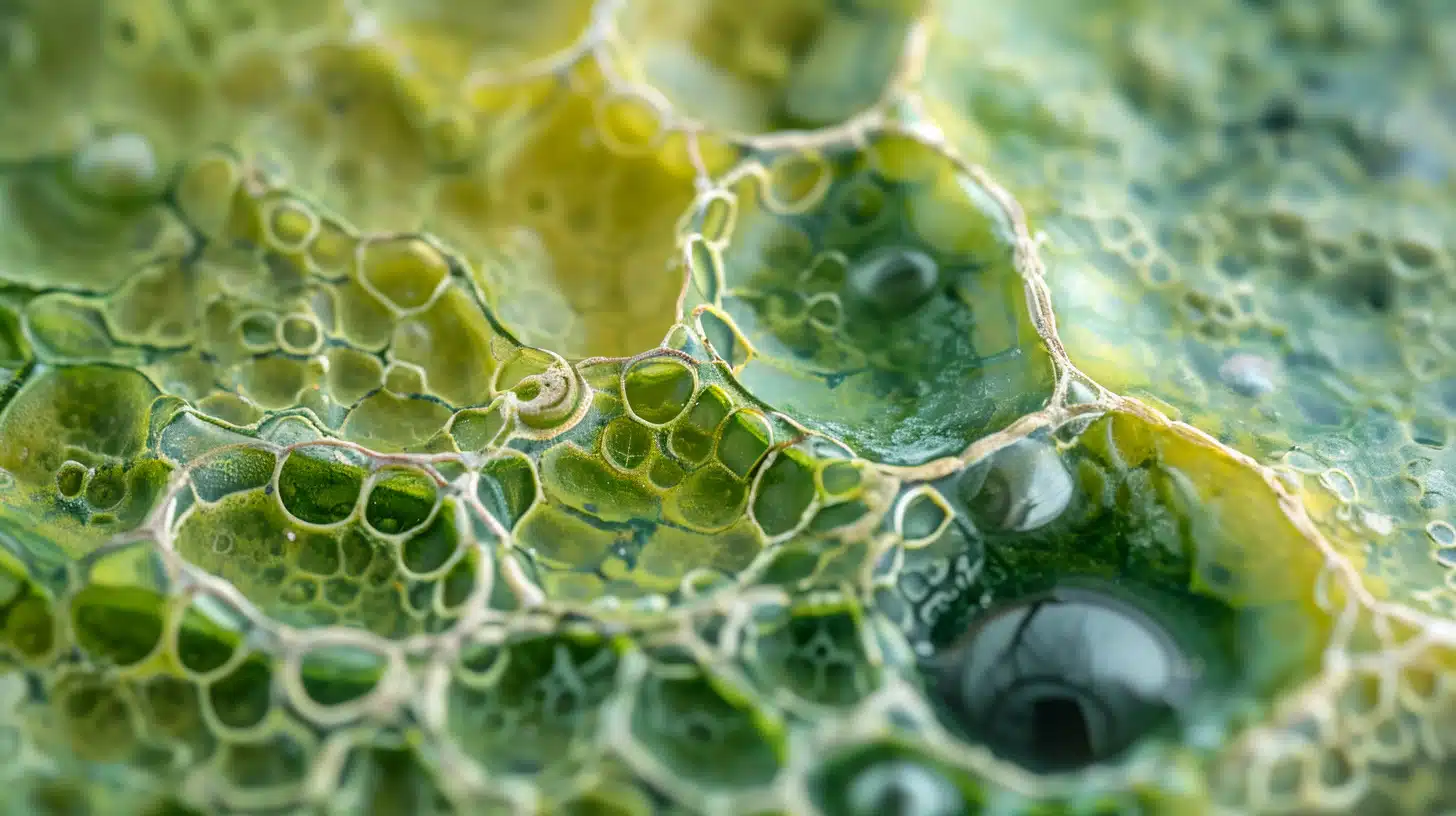The study of the origins of the Earth and the evolution of life forms is an ongoing field of scientific research. Among the most important processes on this journey is photosynthesis, especially oxygenic photosynthesis, which involves converting sunlight, water and carbon dioxide into energy and oxygen. This process is fundamental to the development and sustainability of life on Earth. A recent study has greatly advanced the understanding of the timeline and evolution of this process.
Fossilized bacteria from Australia and Canada provided the first direct evidence of oxygenic photosynthetic structures. These structures are capable of carrying out the type of photosynthesis that produces oxygen, an essential element for the evolution of complex life forms. The fossils in question date back approximately 1.75 billion years. This discovery pushes back the timeline to the origin of oxygen-producing photosynthesis by at least 1.2 billion years. Previously, it was understood that photosynthesis evolved about three and a half billion years ago. However, the initial form of this process, known as anoxygenic photosynthesis, did not produce oxygen.
The key agents in the transition to oxygenic photosynthesis are thought to be cyanobacteria. These organisms are thought to be the first to perform oxygenic photosynthesis using internal structures known as thylakoid membranes. Thylakoid membranes are dense stacks of proteins and lipids where photosynthesis takes place. The activity of cyanobacteria in producing oxygen significantly changed the Earth's atmosphere and oceans, a phenomenon known as the Great Oxygenation Event. This event marked a turning point in Earth's history, as it led to important changes in the chemistry of Earth's oceans and atmosphere and influenced the evolution of the biosphere and complex life.
The importance of cyanobacteria goes beyond their role in producing oxygen. They are precursors of the main structures responsible for photosynthesis in present-day organisms, known as chloroplasts. The process of photosynthesis observed in cyanobacteria is complex and closely mirrors the process found in modern plants. This similarity suggests that the basic mechanisms of photosynthesis were established long ago and have remained largely unchanged.
Previous research has identified thylakoid membranes in fossils dating from 150 to 550 million years ago. Furthermore, there is indirect evidence for oxygen-producing photosynthesis derived from genetic and chemical studies. However, the new study provides direct evidence of these structures in much older fossils. This evidence has been found in fossils from the McDermott Formation in Australia, which date back about 1.75 billion years, and the Grassy Bay Formation in the Canadian Arctic, which is estimated to be about 1 billion years old.
The scarcity of fossilized bacteria presents challenges in studying early photosynthesis. Factors such as the difficulty of preserving soft-bodied organisms such as bacteria, the small size of fossils, and even smaller internal structures, increase the complexity of discovering and analyzing these ancient specimens. Over time, the pressure of sediments and rocks may also destroy the structures that researchers seek to study. In some cases, as seen in the fossils analyzed from the Democratic Republic of the Congo, thylakoids have not been found, likely due to these preservation challenges.
The structures identified in the fossils are extremely small, about the width of a human hair, and require advanced techniques for examination. The researchers used a process that involves molding the bacteria in resin, cutting them into tiny slices and examining them through an electron microscope. This methodology allowed the observation of these small structures.
This discovery has important implications for understanding how complex life evolved on Earth, providing a more complete picture of the timeline and evolution of oxygenic photosynthesis. In addition to the Earth-centered perspective, this knowledge also contributes to a broader understanding of sustainable life processes in the universe. For example, collaborations with NASA have explored theoretical aspects of photosynthesis on planets orbiting stars with wavelengths different from our Sun.
Despite this progress, many questions remain unanswered. A key question concerns the precise timeline of the evolution of oxygen-producing photosynthesis in relation to the Great Oxygenation Event. It is not certain whether this type of photosynthesis evolved before, during, or after this event. More detailed analyzes of ancient microfossils, similar to what was performed in this study, can provide answers to these persistent questions and continue to expand our understanding of the origins and evolution of life on Earth.

“Coffee trailblazer. Social media ninja. Unapologetic web guru. Friendly music fan. Alcohol fanatic.”


